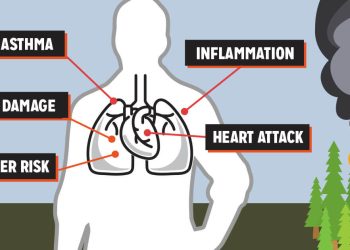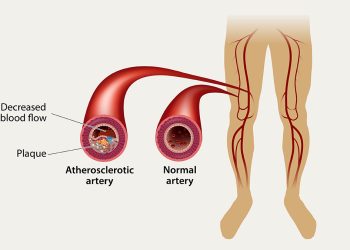Your hips play a vital role in your body’s movement and stability. As one of the largest and most dynamic joints, the hip is designed to manage both stability and mobility. However, as we age, maintaining hip health becomes increasingly important to avoid discomfort, injuries, and mobility issues. Understanding the anatomy of your hips, recognizing signs of dysfunction, and adopting strategies to improve hip stability can make a significant difference in your overall well-being.
In this detailed guide, we’ll explore the composition of the hips, common dysfunctions, and effective ways to restore and maintain hip stability.

Understanding Hip Anatomy
The Structure of the Hips
The hip joint is a ball-and-socket joint formed by the following key components:
- Bones: The thigh bone (femur) connects to the pelvis at the acetabulum, creating the socket. The sacrum, supporting the lumbar spine, completes the skeletal foundation.
- Muscles: The muscles surrounding the hip provide both stability and movement. Key muscle groups include:
- Gluteal Muscles: Crucial for hip stability and strength.
- Hip Flexors (Psoas): Enable lifting the leg and forward movement.
- Quadriceps: Support knee extension and enhance stability.
- Adductors (Groin Muscles): Facilitate leg movement toward the body.
- Hamstrings: Assist with hip extension and knee flexion.
- Nerves: Extending from the lumbar spine, nerves act as communication pathways, transmitting signals that regulate muscle activity and control movement.
- Ligaments and Cartilage: These passive structures cushion and support movements, reducing joint stress and enhancing flexibility.
Causes of Hip Dysfunction
When the hip’s structural balance is disturbed, mobility and stability issues often arise. Common causes of hip dysfunction include:
1. Lifestyle Factors
- Prolonged Sitting: Extended periods of inactivity weaken the hip muscles, causing tightness and compression.
- Excessive Standing or Movement: Constant pressure on the hips can lead to inflammation and joint wear.
- Postural Imbalances: Slouching, uneven weight distribution, or improper lifting techniques can strain the hip joints.
2. Injury and Trauma
- Direct injuries, falls, or accidents can severely impact hip functionality, sometimes causing fractures or ligament tears.
3. Age-Related Wear and Tear
- Natural aging processes may lead to joint degeneration, increasing the risk of arthritis and other chronic conditions.
4. Genetic Factors
- Some individuals may have congenital abnormalities that predispose them to hip instability or dysfunction.
Symptoms of Hip Dysfunction
Identifying early signs of hip issues can help prevent long-term complications. Common symptoms include:
- Persistent aches and pains in the hips, groin, or thighs
- Limited range of motion
- Tightness or stiffness in the hip area
- Pain radiating to the knees, lower back, or feet
- Clicking or popping sounds during movement
If left untreated, hip issues can develop into more severe conditions such as arthritis, bursitis, or tendonitis.
Improving and Maintaining Hip Health
1. Strengthening Exercises for Hip Stability
Incorporating low-impact strength exercises into your routine can enhance hip stability. Recommended exercises include:
- Glute Bridges: Strengthen the gluteal muscles and improve pelvic control.
- Donkey Kicks: Activate the hip extensors and glutes.
- Side Leg Raises: Target the outer thigh muscles to promote balance.
- Superman Exercise: Strengthens the lower back, glutes, and hamstrings.
2. Stretching for Flexibility
Gentle stretching helps reduce stiffness and improves the range of motion. Effective stretches include:
- Hip Flexor Stretch: Opens up the front of the hip and improves flexibility.
- Pigeon Pose: Relieves tension in the hip and gluteal muscles.
- Butterfly Stretch: Enhances flexibility in the inner thighs and groin region.
3. Postural Corrections and Lifestyle Adjustments
- Ergonomic Seating: Ensure your workspace supports proper posture.
- Frequent Breaks: Alternate between sitting and standing to prevent stiffness.
- Weight Management: Maintaining a healthy weight reduces stress on the hip joints.
4. Consulting a Professional
If you experience persistent discomfort, consult a physician or physical therapist. Early diagnosis and tailored treatment plans can prevent worsening conditions.
Preventive Tips for Hip Health
To ensure long-term hip stability and functionality, consider the following tips:
- Engage in regular strength training and stretching exercises.
- Maintain an active lifestyle with balanced movement patterns.
- Avoid prolonged sitting or standing without breaks.
- Practice good posture throughout daily activities.
- Invest in supportive footwear to reduce joint stress.
Frequently Asked Questions:
1. What are the common causes of hip instability?
Hip instability can result from weak muscles, poor posture, injuries, or degenerative conditions like arthritis. Prolonged sitting or excessive movement can also contribute to instability.
2. How can I strengthen my hips at home?
Simple exercises like glute bridges, side leg raises, and donkey kicks can effectively strengthen your hips. Combine these with stretching routines for optimal results.
3. What are the early signs of hip dysfunction?
Early signs may include hip pain, stiffness, limited mobility, and discomfort extending to the lower back or knees.
4. When should I see a doctor for hip pain?
Consult a healthcare professional if you experience persistent pain, severe stiffness, or mobility issues that interfere with daily activities.
5. Can lifestyle changes improve hip health?
Yes, adopting better posture, managing weight, and engaging in regular exercise can significantly enhance hip stability and overall joint health.









